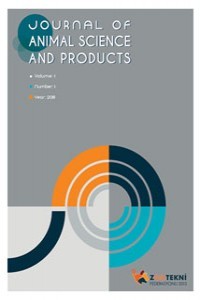
Hayvan Bilimi ve Ürünleri Dergisi
Yazarlar: Mehmet İhsan SOYSAL, Emel ÖZKAN ÜNAL, Eser Kemal GÜRCAN
Konular:Mühendislik, Ziraat
Anahtar Kelimeler:Native animal genetic resources,Genetic erosion
Özet: The genetic diversity of the World’s livestock species is in a state of continuous decline so called genetic erosion and the animal genetic resources that remain are not used in the most efficient way. There are several factors such as the growing trend to a global reliance on a very limited number of modern breeds suited for the high input-output needs of industrial agriculture. The effect of this trend is that many breeds have lost their function and disappear by means of cross breeding without notice which place breeds at risk of loss and threaten domestic animal diversity. In order to avoid this phenomenon of erosion of farm animal genetic resources several measures are taken by the countries owned as in the form of constructing in situ and ex situ conservation herds or often small populations. However, due to the risk of inbreeding and random drift may cause the loss of genetic diversity in the case of conservation programs with limited number of live animals in small breeding herds. The rate of inbreeding (ΔF) has a predictable form, and has a very important relationship with loss of variation. Effective population size (Ne), in other words, the number of breeding individuals in an idealized population that would show the same amount of random genetic drift or the same amount of inbreeding as the population under consideration which is the function of number of males and females gives general measurable idea of the dynamics of genetic variability within a given population. This work was aimed to review the methods of assessing the degree of endangerment for extinction risk status (assigning populations to categories of endangerment) of livestock breeds in conservation programs.